
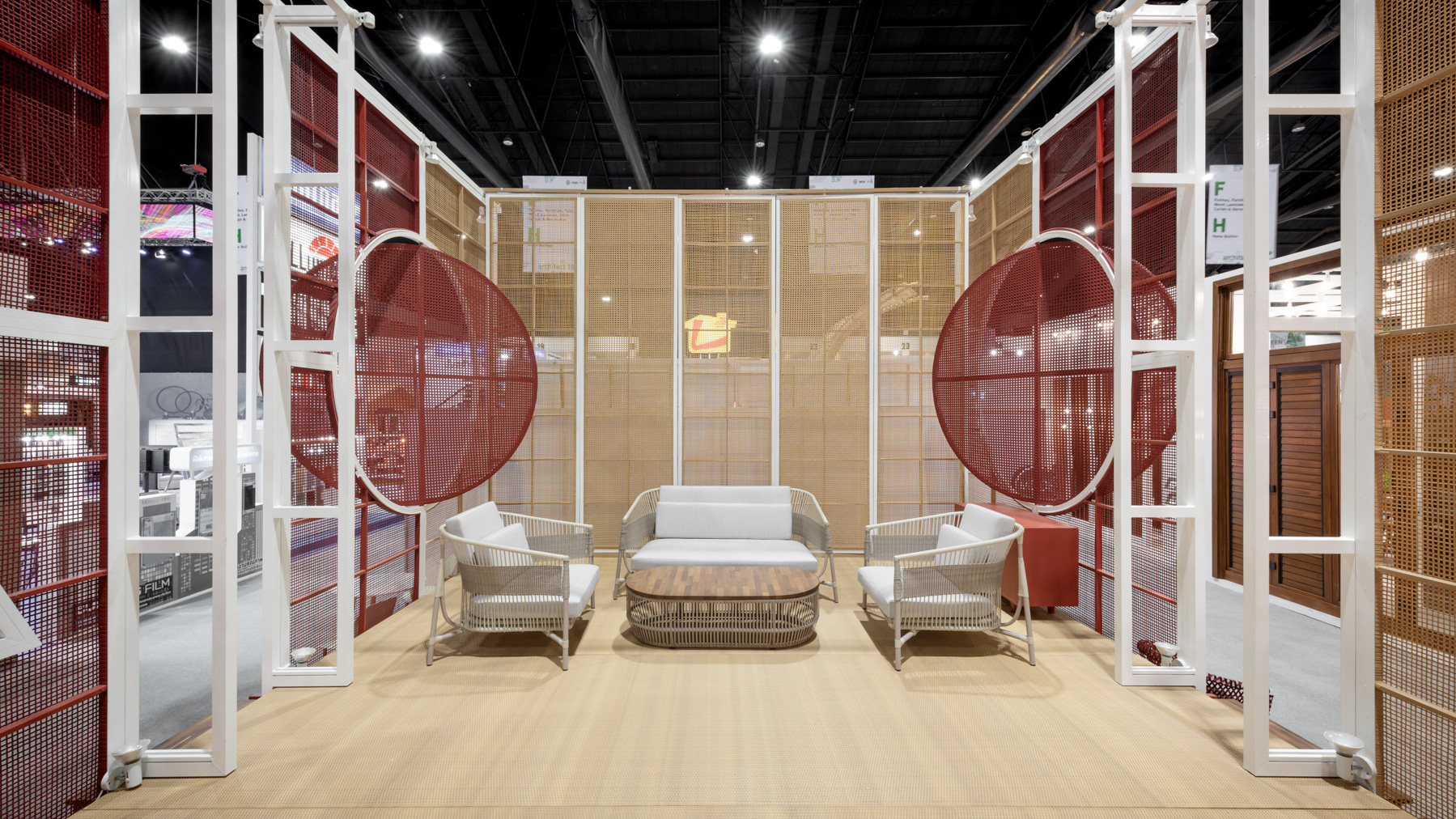


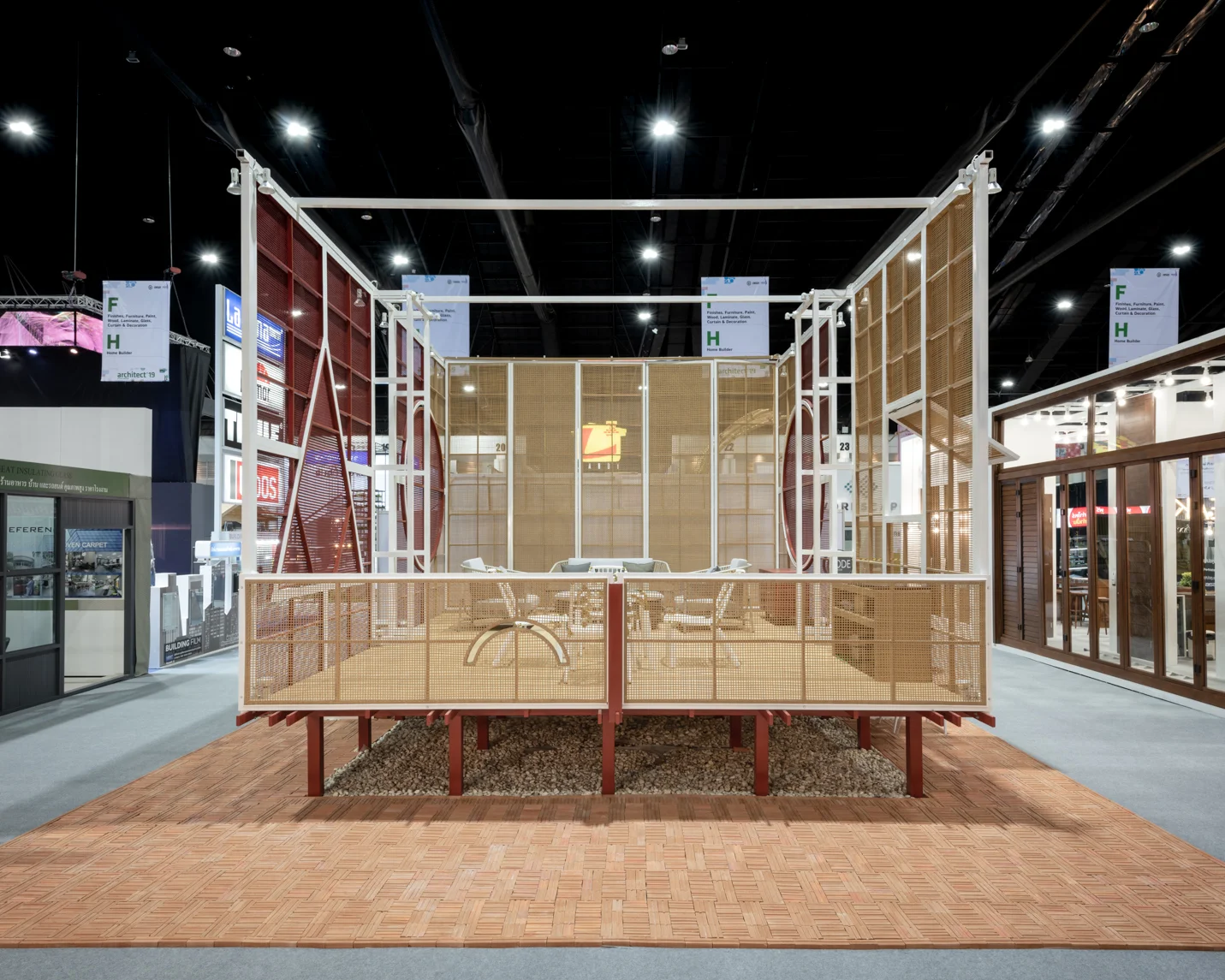


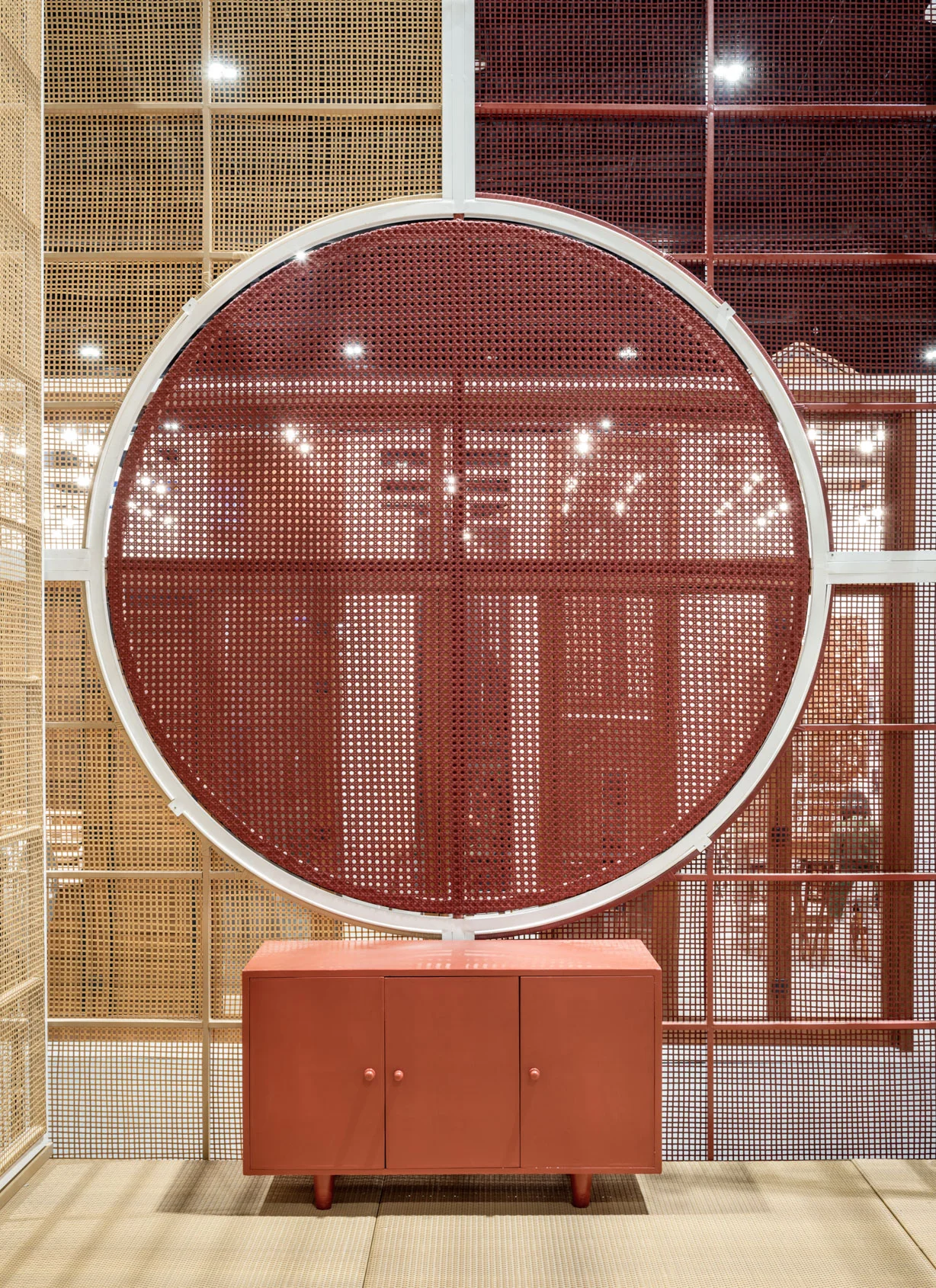












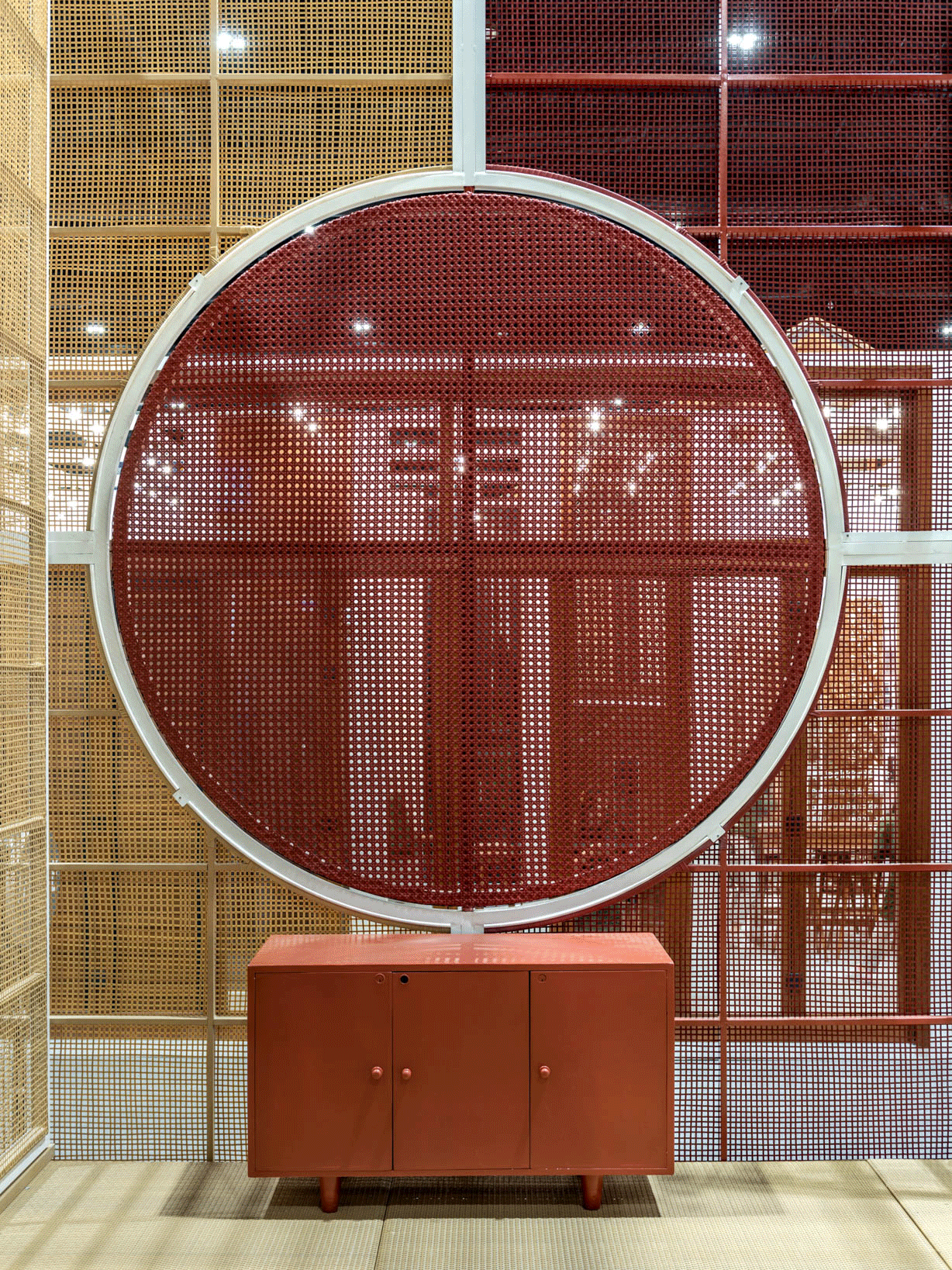
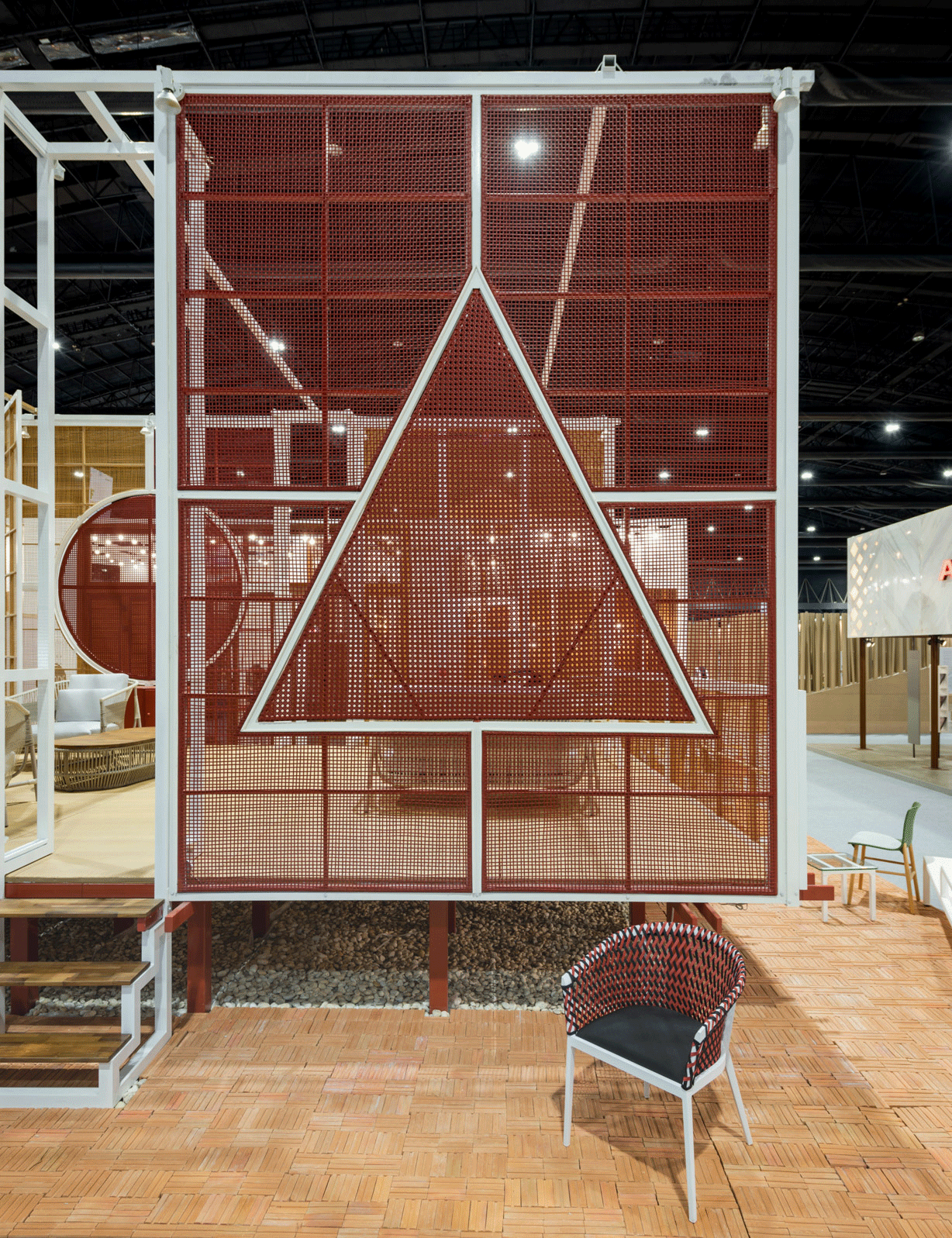
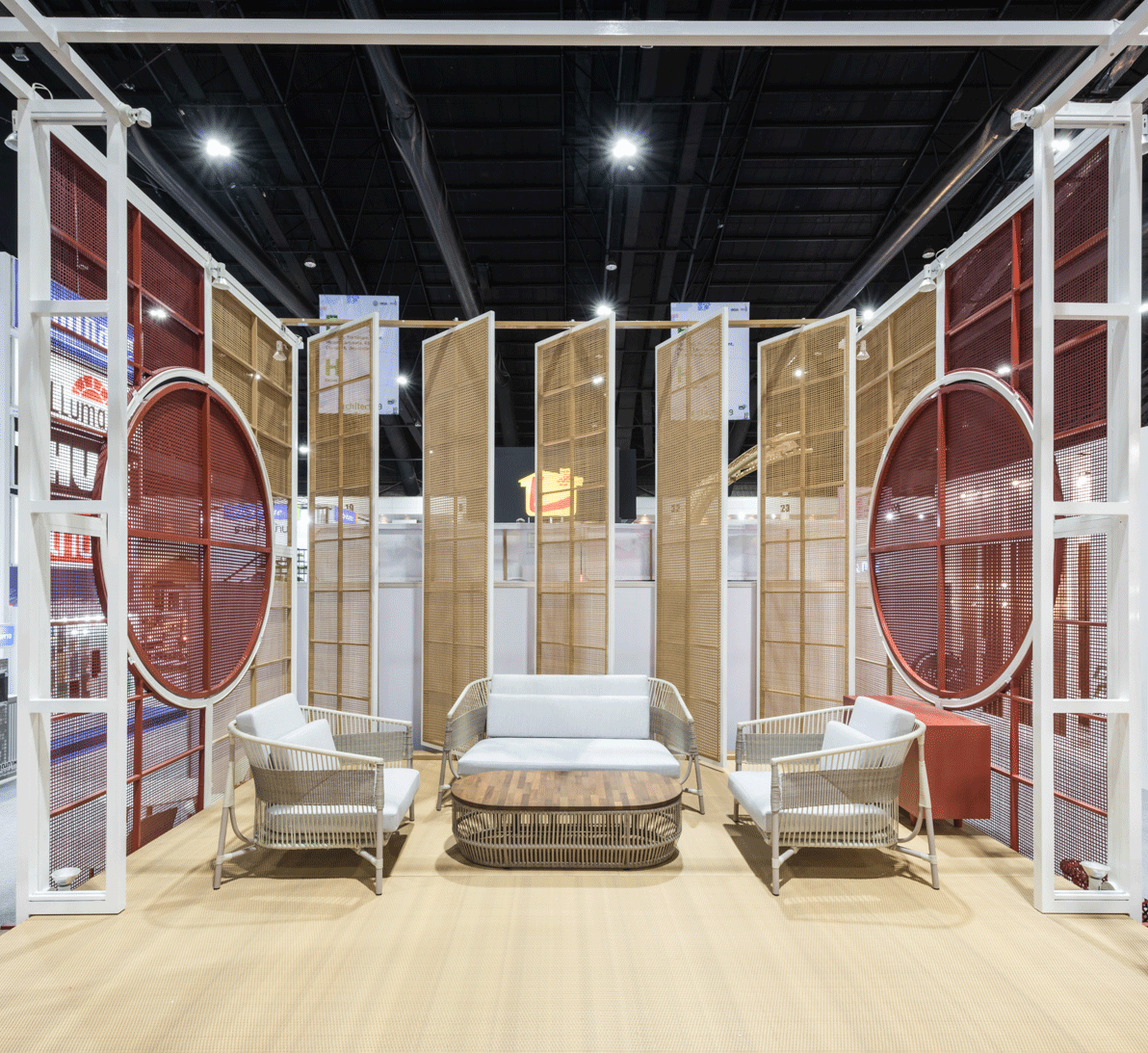















type: Architecture
program: Temporary Pavillion
location: Bangkok, Thailand (Impact Challenger , ASA 2019)
area: -
client: Hawaiithai
design: 2019

Thai traditional house in digital modern age. The architectural elements are rethinking along with innovation. Synthetic rattan has created as house territory. Weaving wall, panel, door, window and stair has design as basic architecture combination along with tropical space usage.
photo credit: Jin

It’s almost a tradition for architects to design furniture to complement their buildings. Often, for example, a chair may use a similar pattern or form of a building, or represent a miniaturized philosophy of the architecture surrounding it. But what if instead the architecture took its cues from the furniture inside? One example is the rattan pavilion, which combines elements of traditional rattan furniture, Thai vernacular architecture, and modern construction.
Rattan is used in Thailand for furniture, baskets and other utilitarian objects. As furniture, it is perfect for a tropical climate as it allows for a free flow of air to cool the user. For the rattan pavilion, this provides cross-ventilation through the walls at all heights. The synthetic rattan is woven by both hand and machine, using both a cross weave and traditional weaving style, known as ‘dok pikul’, to create visually pleasing patterns.
To promote ventilation, traditional Thai teak houses are raised off the ground and have a single room open plan. The rattan pavilion uses and amplifies these features by using rattan for not only the walls, but all elements- floor, windows, stairs, and roof.
Structure is minimized and made unobtrusive by using a steel frame. This, combined with rattan panels, which are singular structural elements, allows for a knock-down pavilion, which can be reassembled as needed. Modern constraints and construction with rattan weaving give this design a combination of diversity, handcraft and industrial production, another example of the architect’s idea of ‘digital craftsmanship’.
PHOTO CREDIT : Jinnawat Borihankijanan
